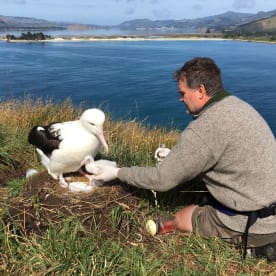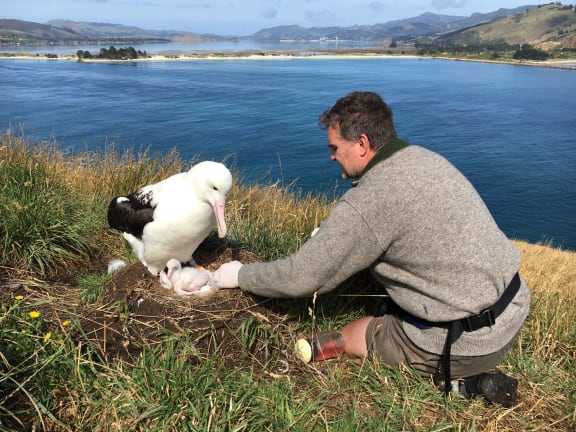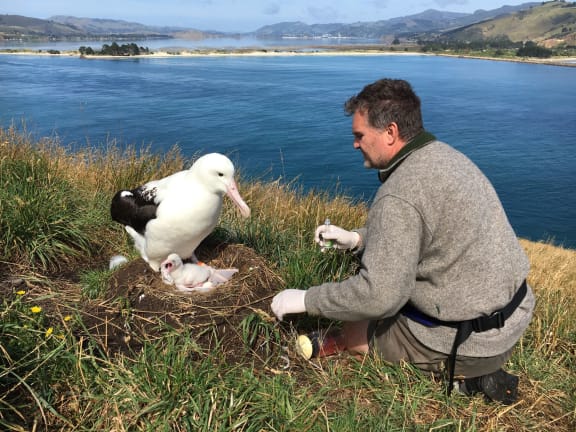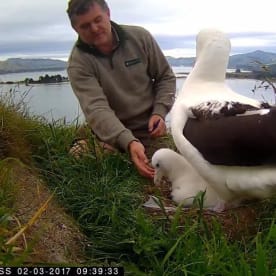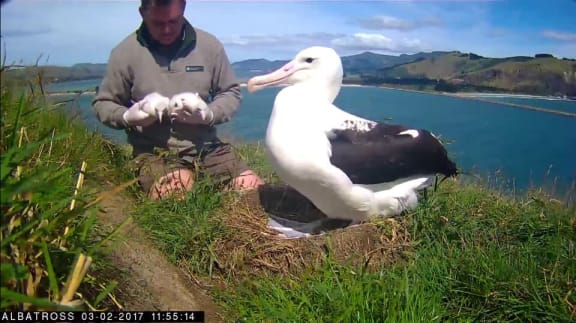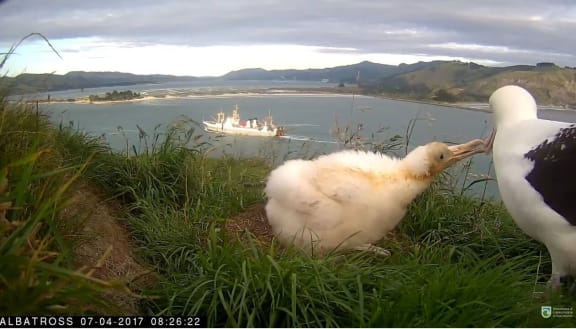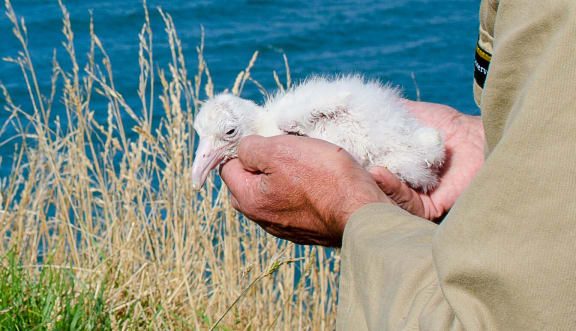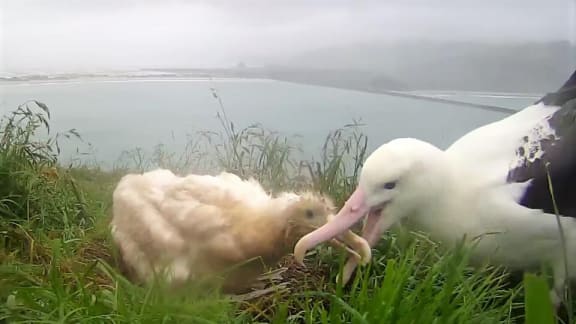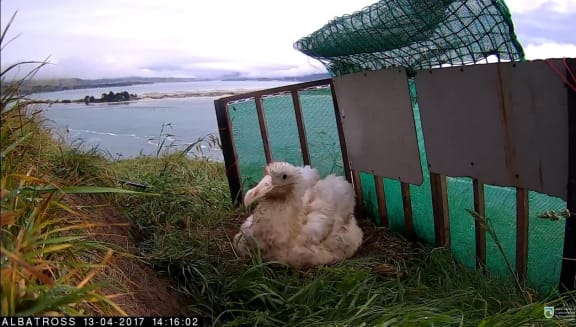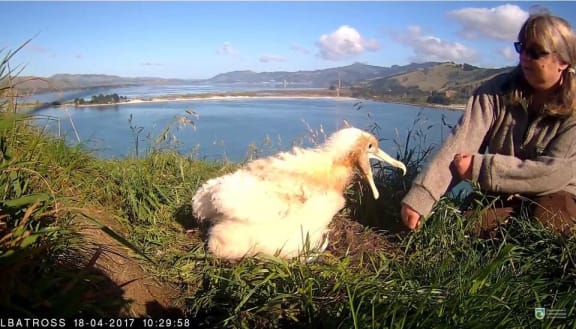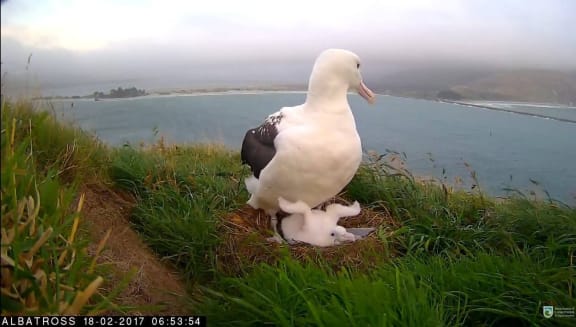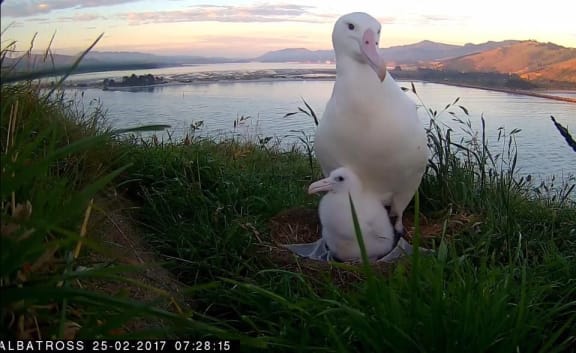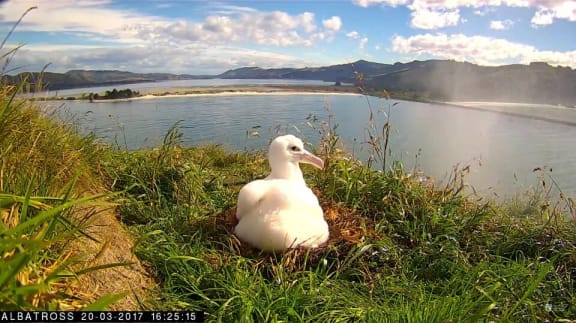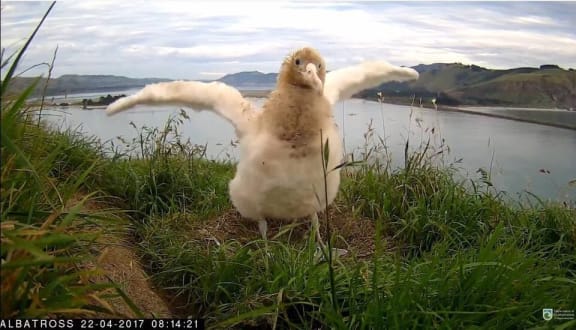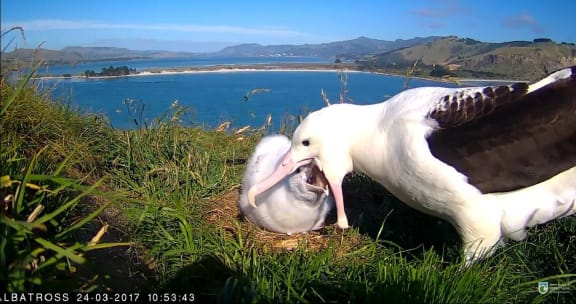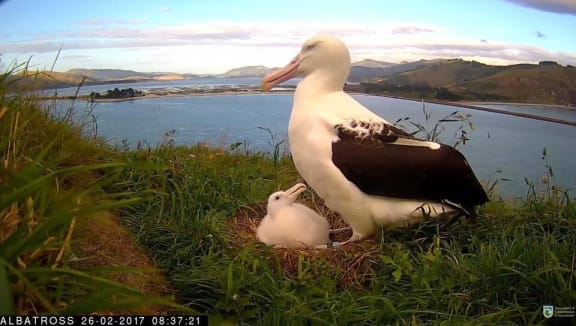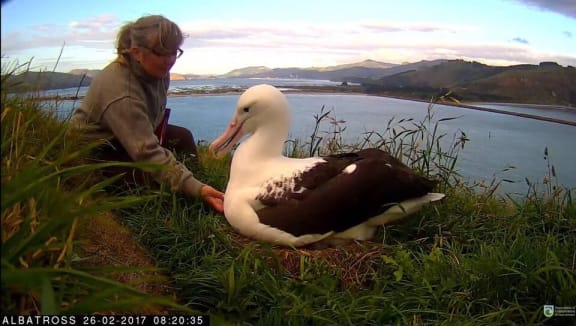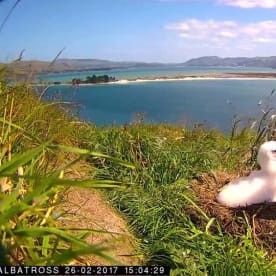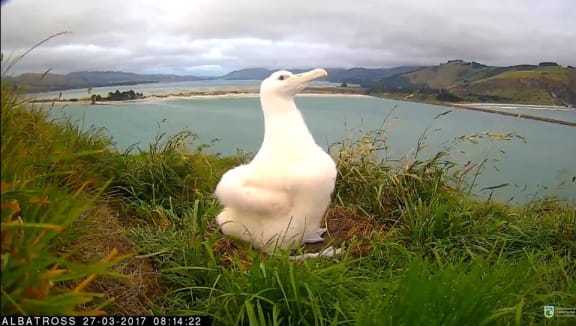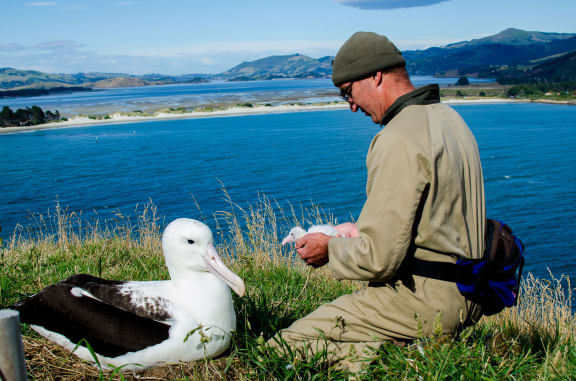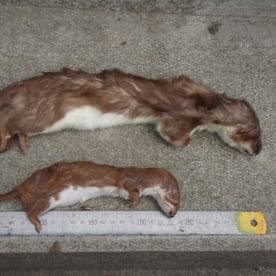After making its debut last year a webcam at an Otago albatross colony is a global hit.
The webcam at the Royal Alabatross Centre near Dunedin launched in January 2016 to record the albatross chick Moana’s journey to maturity. It has now been viewed more than 1 million times in 195 countries.
The Department of Conservation’s (DOC) ‘Royal cam’ streams from its colony at Taiaroa Head near Dunedin.
This year a chick belonging to young albatross pair, BK and RBK, is the star of the show - although it has yet to be named as rangers are not sure whether it is male or female.
DOC's threatened species ambassador Nicola Toki says the camera is unobtrusive and sturdy.
“It’s set up on an old umbrella stand and is designed to withstand a fair bit.”
Albatross chicks have varied personalities and last year’s star Moana, Toki says, was easy to handle and pick up. This year’s chick is more nervous, she says.
Eventually, once the chick’s down has drifted off and its feathers have started to come through, it will stretch its wings out on a windy day and take off for the first time.
It will not touch land again for between five and seven years.
“It will just circle and circle and circle the southern ocean and eventually come back to its home site here.
“I’ve been down to the southern ocean a couple of times and seen them down there in pretty extraordinary conditions in terms of the wind and the waves and they just make it look like it’s just… perfect for them.”
The webcam is an educational tool and more than 60,000 people have commented on the video with rangers responding to the many questions asked.
“People get a real kick out of that. We want people to understand why we can’t let species go extinct.”
Toki says people now not only know the birds are there, they are falling in love with them.
The video is popular in schools, palliative care and even neurosurgery departments, where it’s used to distract patients who are undergoing brain surgery while they’re conscious.
“So that people could have something to focus on and soothe them while someone was fidgeting around in their brain, which I just think is incredible.”

